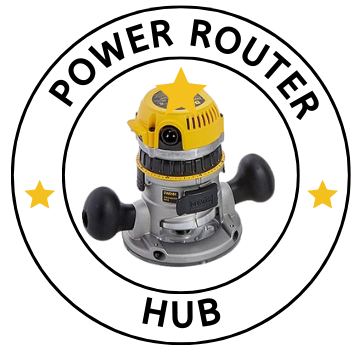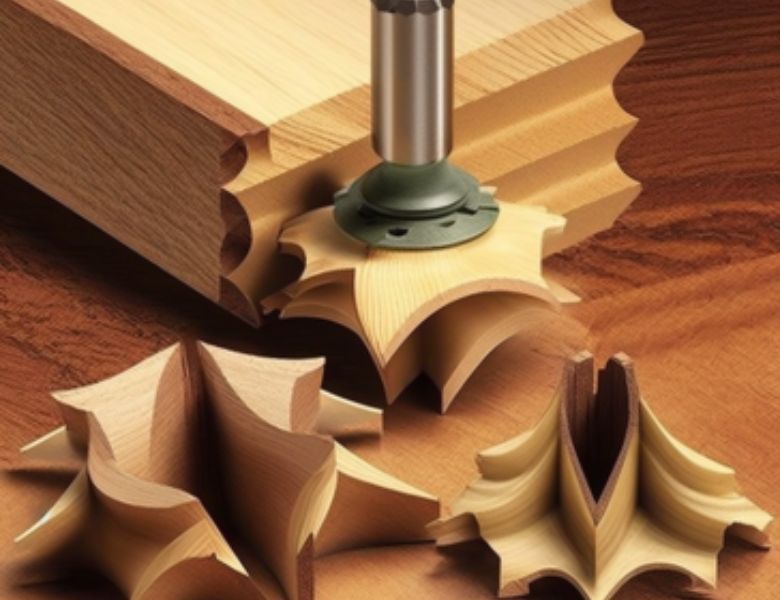Hardwood floors add a timeless, classic feel to any home. While installing hardwood floors can seem daunting, having the right tools and knowledge can make the process easier and more efficient. One essential tool for installing hardwood floors is a router, which is used to create the tongue and groove joints that interlock the boards together. To achieve a smooth and precise joint, it’s crucial to choose the right router bits.
In this blog post, we’ll explore the different types of router bits for hardwood floor tongue and groove, how to choose the right ones for your specific project, and some tips for using them effectively. By the end of this post, you’ll have the knowledge you need to confidently tackle your hardwood floor installation project.
Understanding Router Bits for Hardwood Floor Tongue and Groove
Router bits are cutting tools that are used with a router to create grooves, slots, and other decorative shapes on wood surfaces. When it comes to hardwood floor tongue and groove joints, there are different types of router bits to choose from, each with its own characteristics and advantages.
- Straight router bits: These are the most common and versatile router bits for hardwood floor tongue and groove joints. They feature a simple design with a straight cutting edge and can be used to create both the tongue and groove parts of the joint.
- Stagger-tooth router bits: These router bits have multiple cutting edges that are positioned at different heights. This design helps to reduce chatter and tear-out, resulting in a smoother cut.
- Round nose router bits: These bits have a rounded tip and are ideal for creating a decorative edge on the groove part of the joint. They are not as commonly used for tongue and groove joints as they are for other types of woodworking projects.
- Cove router bits: These bits have a concave cutting edge and are used to create a concave shape on the groove part of the joint. They are not as commonly used for tongue and groove joints as they are for other types of woodworking projects.
- Ogee router bits: These bits have a decorative edge profile with a concave and convex curve. They are used to create a decorative edge on the groove part of the joint and are not as commonly used for tongue and groove joints as they are for other types of woodworking projects.
Understanding the different types of router bits available can help you choose the right tool for your specific hardwood floor tongue and groove joint project.
Choosing the Right Router Bit for Hardwood Floor Tongue and Groove
Choosing the right router bit for your hardwood floor tongue and groove joint project depends on a few factors. Consider the following when selecting a router bit:
- Hardness of the wood: The hardness of the wood being used will affect the type of router bit you should choose. Harder woods require more durable and sharper router bits, while softer woods can be cut with a wider variety of bits.
- Depth of the cut: The depth of the cut you need to make will affect the size and shape of the router bit you should choose. If you’re cutting a shallow groove, a smaller router bit will work better, while a larger bit is needed for deeper grooves.
- Type of tongue and groove joint: Different types of tongue and groove joints require different types of router bits. For example, a simple straight joint can be cut with a straight router bit, while a more complex joint may require a stagger-tooth router bit.
Here are some recommended router bit sizes and types for different hardwoods:
- Oak: 1/4-inch straight or spiral router bit
- Maple: 1/4-inch straight or spiral router bit
- Walnut: 1/2-inch straight or spiral router bit
- Cherry: 1/2-inch straight or spiral router bit
- Mahogany: 1/2-inch straight or spiral router bit
When in doubt, it’s always best to consult with a professional or knowledgeable salesperson to ensure you select the right router bit for your specific project.
See Also: Router Bits Profile/Edge Treatment
Tips for Using Router Bits for Hardwood Floor Tongue and Groove
Using router bits for hardwood floor tongue and groove joints requires a bit of finesse and skill. Here are some tips to help you use them effectively:
- Safety precautions: Always wear appropriate safety gear, such as safety glasses and ear protection. Also, ensure that the router is securely clamped to a work surface and that the bit is securely attached to the router.
- Setting up the router: Set the router to the correct depth and position the fence to ensure the proper spacing between the boards. Test the setup on a scrap piece of wood before starting on the actual boards.
- Techniques for cutting the joint: Take your time and make multiple passes with the router to avoid overheating the bit and the wood. Start with the groove side of the joint, making sure to keep the router level and steady. Then switch to the tongue side and cut the tongue to fit the groove.
- Maintenance and cleaning of the router bits: Clean the bits regularly with a wire brush to remove any buildup of dust and debris. Sharpen or replace bits as necessary to ensure they cut cleanly and smoothly.
By following these tips, you can create clean and precise tongue and groove joints with your router bits, resulting in a beautiful hardwood floor.
FAQs
Which router bit to use for tongue and groove?
The type of router bit to use for tongue and groove joints depends on the type of wood, the depth of the cut, and the specific joint being created. Generally, a straight router bit is the most common and versatile type of bit used for tongue and groove joints, but other types such as stagger-tooth bits, round nose bits, cove bits, and ogee bits may also be used depending on the specific requirements of the project. It’s important to consult with a professional or knowledgeable salesperson to ensure you select the right router bit for your specific project.
Can you router tongue and groove?
Yes, you can router tongue and groove joints in hardwood floors. A router is a common tool used to create these joints, which are necessary to interlock the floorboards together. Using a router allows for precision and consistency in the joint, which is important for both the look and function of the finished floor. However, it’s important to choose the right router bit for the specific project and follow proper safety precautions when using the tool.
What tool do you use to make tongue and groove flooring?
The tool typically used to make tongue and groove flooring is a router. A router is a versatile and efficient tool that can cut precise and consistent grooves and tongues into the wood. Router bits, which come in various shapes and sizes, can be used to create different types of joints depending on the requirements of the project. Other tools such as a table saw, jointer, and planer may also be used in the process of making tongue and groove flooring, depending on the specific requirements of the project.
What router bits do I need for woodworking?
The router bits you need for woodworking depend on the specific woodworking project you are working on. There are many types of router bits available, each with its own characteristics and advantages. Some common router bits that are used in woodworking include straight bits, flush trim bits, chamfer bits, rabbeting bits, roundover bits, and cove bits. It’s important to choose the right bit for your specific project based on factors such as the type of cut you need to make, the type of wood you’re working with, and the desired end result. It’s also essential to follow proper safety precautions when using a router and its bits.
Conclusion
In conclusion, when it comes to installing a hardwood floor, having the right tools and knowledge is essential. Router bits play a vital role in creating the tongue and groove joints that hold the floorboards together. By understanding the different types of router bits available, choosing the right one for your specific project, and using them effectively, you can achieve a smooth and precise joint that will last for years to come.
Remember to consider factors such as the hardness of the wood, the depth of the cut, and the type of joint when selecting a router bit. Additionally, taking safety precautions, setting up the router properly, using the correct techniques, and maintaining the router bits will help ensure a successful and safe installation.
By following these guidelines, you can install a hardwood floor that is both beautiful and functional. With the right tools, knowledge, and a little bit of patience, you can achieve professional-grade results and enjoy your stunning new floor for years to come.

